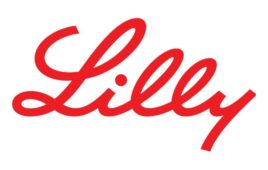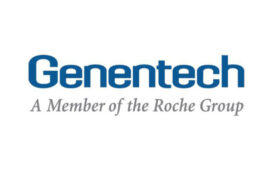
Photo by Anna Shvets from Pexels
With Democrats having gained control of the Senate and the presidency, some form of drug-pricing reform is likely. But with the raging COVID-19 pandemic and ongoing threats to the Affordable Care Act, Democrats are more likely to focus on those issues in the near term, according to Barrett Thornhill, a partner at the public affairs firm Forbes Tate in a call with UBS analysts.
The political dynamics of the House is one challenge. Even though Democrats have narrow control of the House, they also have an increasingly vocal progressive wing. For that reason, bipartisan healthcare policy from the Senate could “actually have some trouble when it goes to the House because it’s not left enough,” Thornhill said.
COVID-19 itself has stymied prior legislative attempts at drug-pricing reform, while President Trump’s executive orders face ongoing legal challenges.
Significant changes to drug pricing policy are unlikely until 2022 at the earliest, according to UBS. Drug-pricing reform will likely be a point of discussion in Congress, but “actual reform” is likely to take more than two years, agreed Troy Groetken, a shareholder, board member and executive committee member at the intellectual property law firm McAndrews, Held & Malloy (Chicago).
Several possible templates for drug-pricing reform
Possible drug pricing policies Biden could pursue include authorizing Medicare to negotiate prices with pharma companies, tying U.S. drug prices to rates in other countries and prohibiting price increases following product launch, as a recent article in JAMA observes.
Before the pandemic, there were several recent attempts to curb drug pricing through legislative action. Highlighted below is a non-exhaustive selection of such drug pricing bills that could serve as a basis for future drug-pricing reform efforts. But given the difficulty of building bipartisan consensus in the Congress, drug-pricing reform could “tilt back towards administrative action,” Thornhill said.
S. 977 – Transparent Drug Pricing Act of 2019. Primarily focused on retail pricing listing, the Transparent Drug Pricing Act aims to limit the retail list price. As its name indicates, it also aims to improve transparency by forcing pharmacists to disclose to patients the out-of-pocket cost for a prescription drug and its price without insurance.
The proposal also temporarily prevents the retail price list for drugs and biologics from exceeding rates in Canada, France, the U.K., Japan or Germany. Because those nations have price controls, the bill would reduce overall drug prices.
If the bill is to serve as a template for future reform, more clarity is required, according to Groetken. For one thing, using an international retail list price for drugs as a template for domestic pricing requires more specificity. “Is it the average drug price? The retail price from the wholesaler to distributor or the distributor to the patient?” Groetken asked. “There’s just too many unknowns.”
“The bill also had no enforcement provisions, so it was very early in its stages,” Groetken said. So gauging its potential impact is difficult without more information.
“I could see that bill potentially coming back again, but if it does come back, I think that the representatives and senators would work together to try and probably nail down some of those issues that were raised last time,” Groetken added.
S. 1416 – Affordable Prescriptions for Patients Act of 2019 and H.R. 5133 – Affordable Prescriptions for Patients Through Promoting Competition Act of 2019. These bills intended to institute drug pricing controls and limit the amount of money pharmaceutical companies could charge based on the product’s age and whether a drug faces international competition.
The bills also included intellectual property provisions that would limit the timeframe drug companies enjoy a patent monopoly after launching a new product.
Specifically related to intellectual property, S. 1416 would prevent patent thicketing and product hopping of drugs.
The former term refers to drug developers’ practice of winning a new patent related to previously-patented drugs, biologics or chemical compositions solely to limit competition from generic drug companies.
Product hopping refers to tactics drug companies use when attempting to stifle generic competition. For example, a drug company could develop a reformulated version of an existing FDA-approved drug and patent it, leading to a patent rights extension.
S. 2543 – Prescription Drug Pricing Reduction Act of 2019. This bill from the Senate Finance Committee would reduce Medicare and Medicaid drug prices by capping spending for patients who have reached out-of-pocket spending limits while strengthening Medicare’s Part D outpatient drug benefit.
The bill’s provisions related to drug price reporting were included in the $900 billion U.S. COVID-19 relief package (H.R.133 – Consolidated Appropriations Act, 2021).
H.R. 4158 – CURE High Drug Prices Act. The Combatting Unreasonable Rises and Excessively High Drug Prices Act intends to end the price gouging of drugs. Like the Transparent Drug Pricing Act of 2019 Senate proposal, the legislation seeks to identify the average price of a drug and then limit pricing increases. It would do so by limiting price increases to less than 10% within 12 months, 20% within 36 months and 30% within 60 months.
H.R. 3, the Elijah E. Cummings Lower Drug Costs Now Act. Unpopular with the drug industry, H.R. 3 is one of the more “onerous” plans to reform drug pricing for the pharma industry, according to UBS.
“It has no chance of bipartisan support,” said Joe Grogan in 2019 when he was the White House Domestic Policy Council director. “It contemplates a whole new bureaucracy at HHS that is somehow going to divine what a drug’s value should be when you’ve got academics, [pharmacy benefit managers], payers, drug companies and consultants all invested in how much a drug should be valued.”
Even though the proposed legislation has faded into the background, it could serve as a template for a Senate bill given the Democratic control of the government, Thornhill said. But the bill could potentially fail to win the support of moderate Democrats.
The ongoing COVID-19 crisis is likely to delay Democrats’ attempts to reevaluate H.R. 3’s policies. But the idea of the H.R. 3 serving as a template for drug pricing reform at some point in the future is “not far fetched,” Thornhill said. “There could be a real effort for really substantive changes and policy implementation,” he added. Such attempts, if pursued, could represent a “total reform on how products drugs and devices are launched, and how they’re how those prices are controlled over time, through a variety of tools, inflation adjustment, reviews and things like that,” Thornhill said.





Tell Us What You Think!